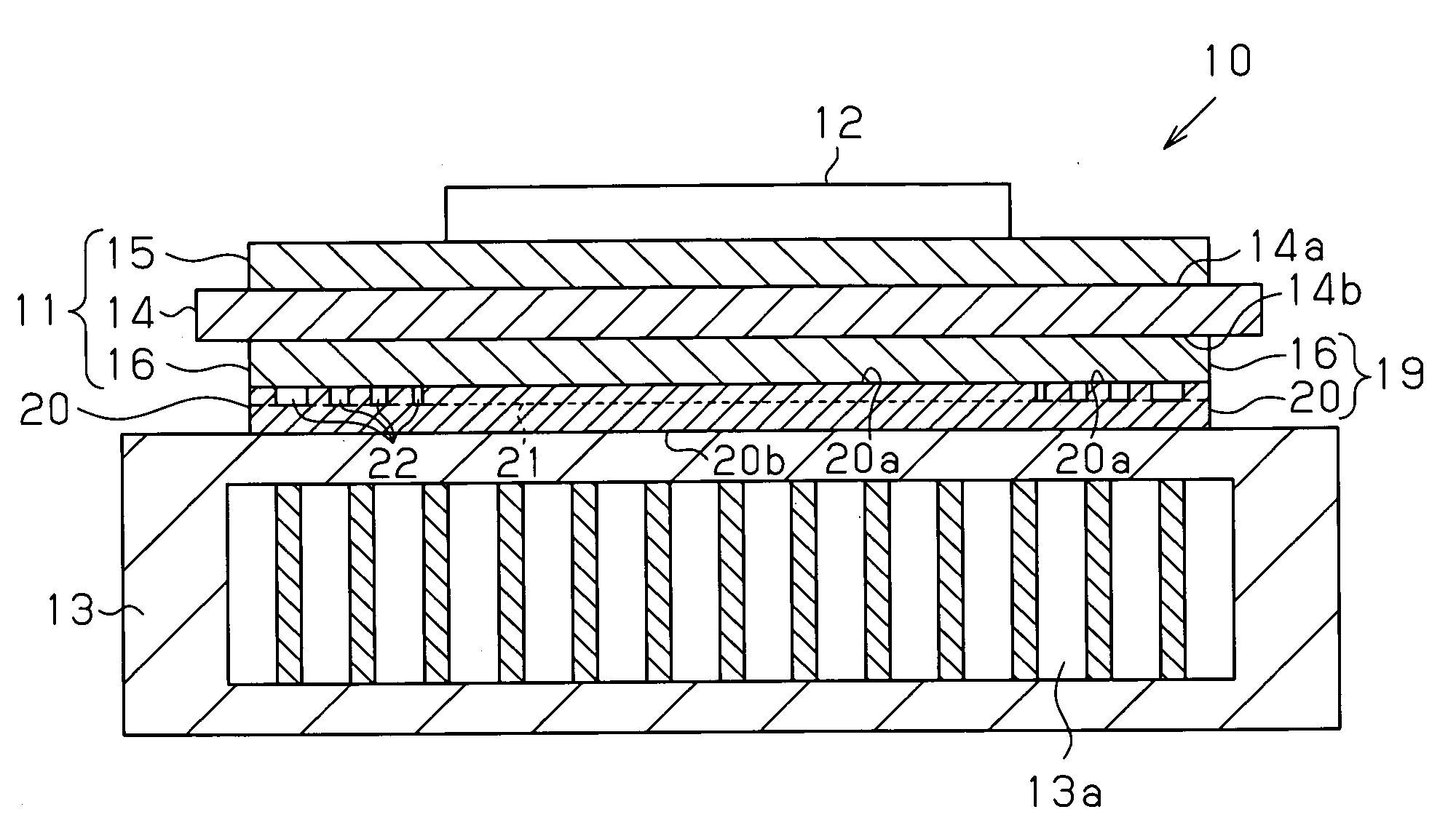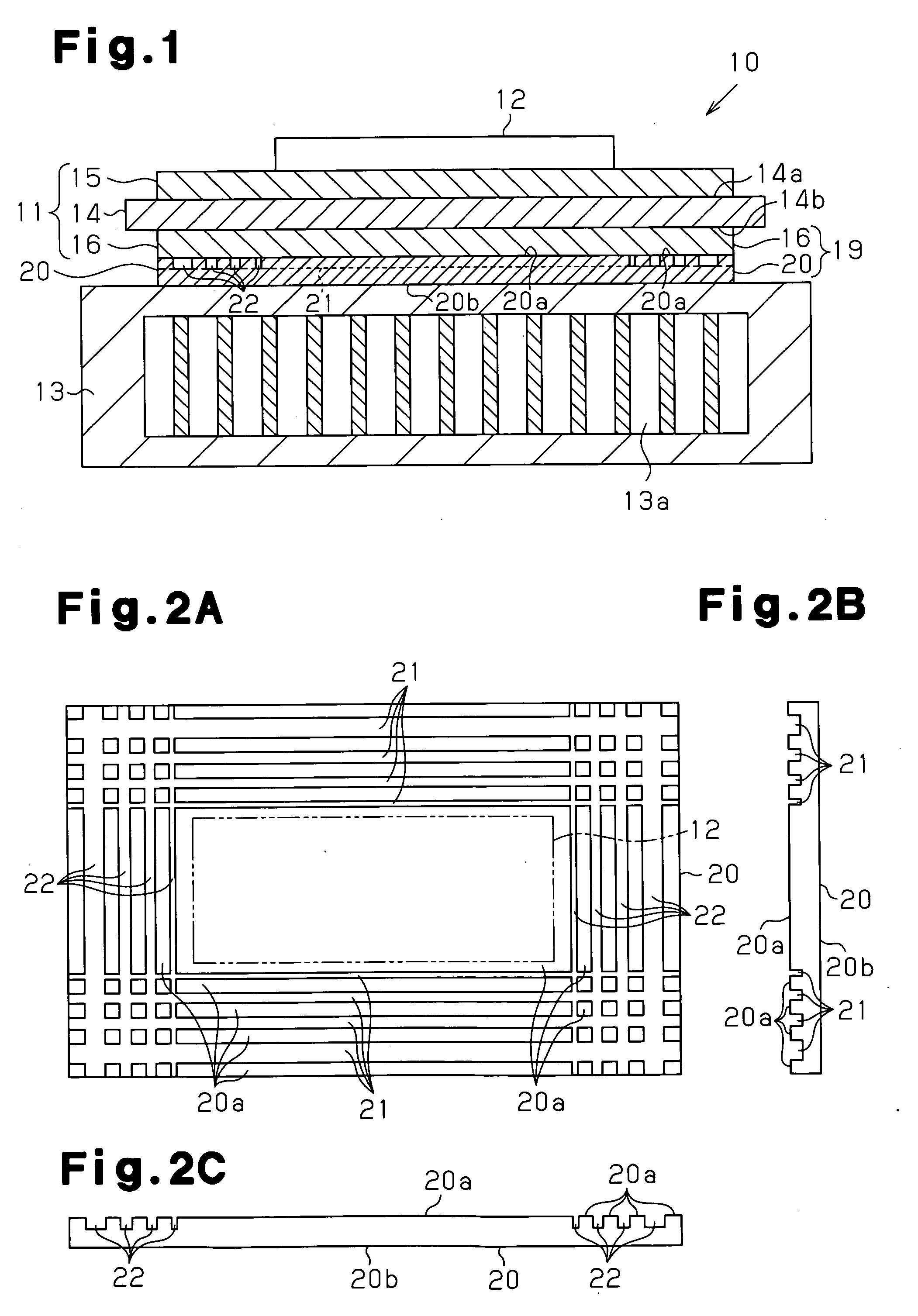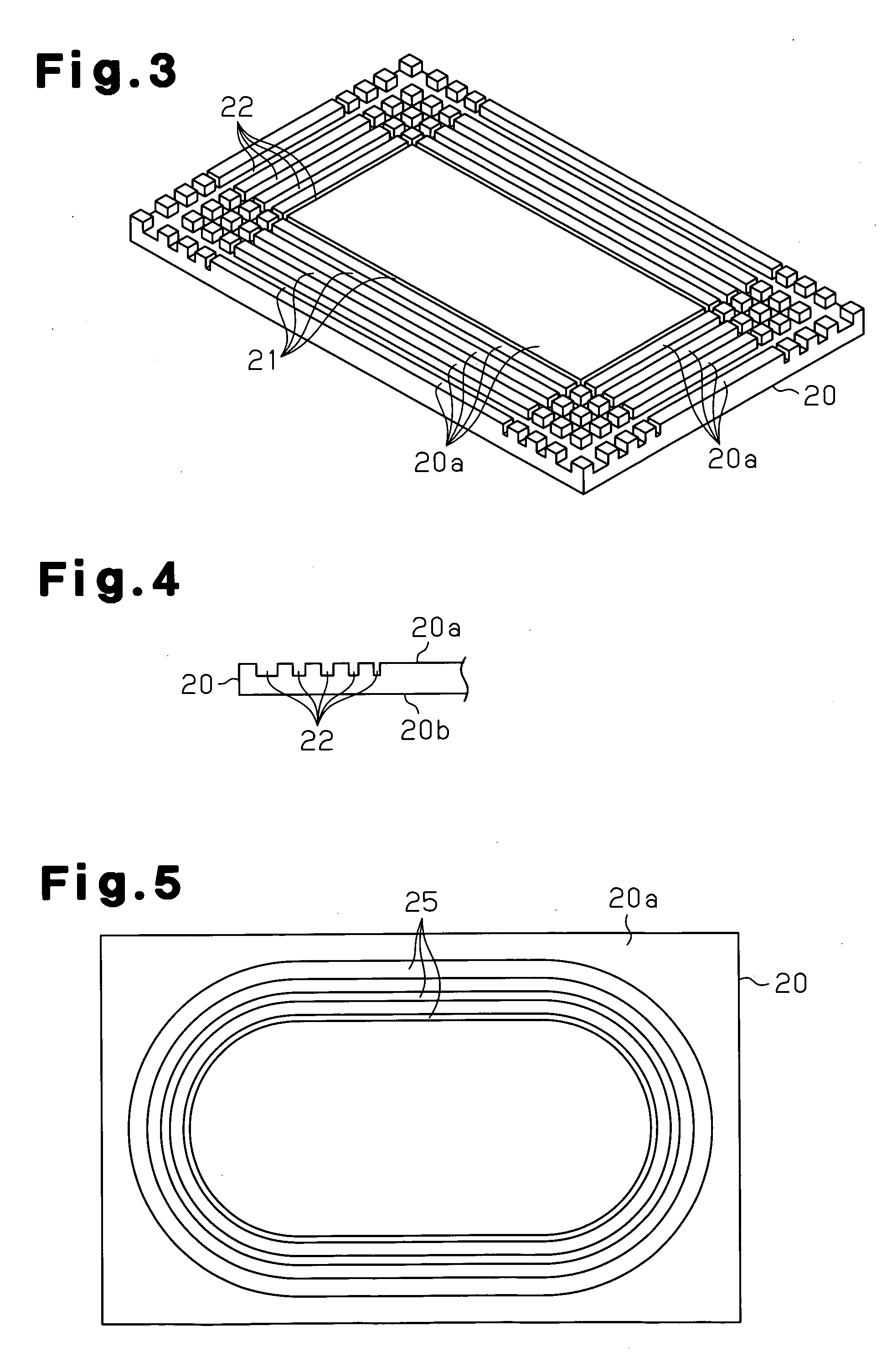Semiconductor device
a technology of semiconductor devices and semiconductor substrates, applied in semiconductor devices, semiconductor/solid-state device details, electrical apparatus, etc., can solve the problems of cracking at the junction portions between the ceramic substrate and the back side metal layer, and reducing heat radiating performance, so as to prevent cracks and peeling, the effect of superior heat radiating performan
- Summary
- Abstract
- Description
- Claims
- Application Information
AI Technical Summary
Benefits of technology
Problems solved by technology
Method used
Image
Examples
Embodiment Construction
[0020]One embodiment of the present invention will now be described with reference to FIGS. 1 to 3.
[0021]As shown in FIG. 1, a semiconductor device 10 includes a circuit board 11, a semiconductor element 12 joined to the circuit board 11, a heat sink 13 functioning as a radiator, and a stress relaxation member 20 located between the circuit board 11 and the heat sink 13. The circuit board 11 is provided with a ceramic substrate (insulated substrate) 14 that has a first surface 14a (front side) and a second surface 14b (back side), which is opposite to the first surface 14a. The circuit board 11 also includes a metal circuit 15, which is directly joined to the first surface 14a, and a metal plate 16, which is directly joined to the second surface 14b. The semiconductor element 12 is joined to the metal circuit 15, so that the semiconductor element 12 and the ceramic substrate 14 are coupled to each other by the metal circuit 15.
[0022]The semiconductor element 12 may be, for example, ...
PUM
 Login to View More
Login to View More Abstract
Description
Claims
Application Information
 Login to View More
Login to View More - R&D
- Intellectual Property
- Life Sciences
- Materials
- Tech Scout
- Unparalleled Data Quality
- Higher Quality Content
- 60% Fewer Hallucinations
Browse by: Latest US Patents, China's latest patents, Technical Efficacy Thesaurus, Application Domain, Technology Topic, Popular Technical Reports.
© 2025 PatSnap. All rights reserved.Legal|Privacy policy|Modern Slavery Act Transparency Statement|Sitemap|About US| Contact US: help@patsnap.com



